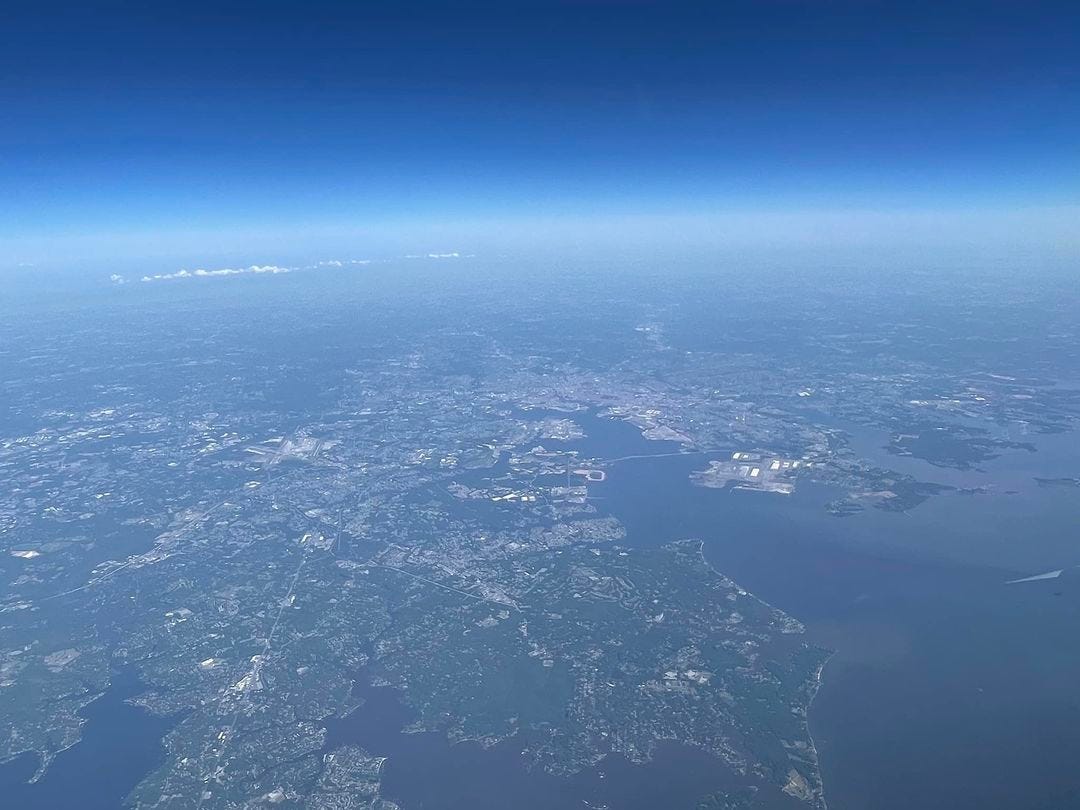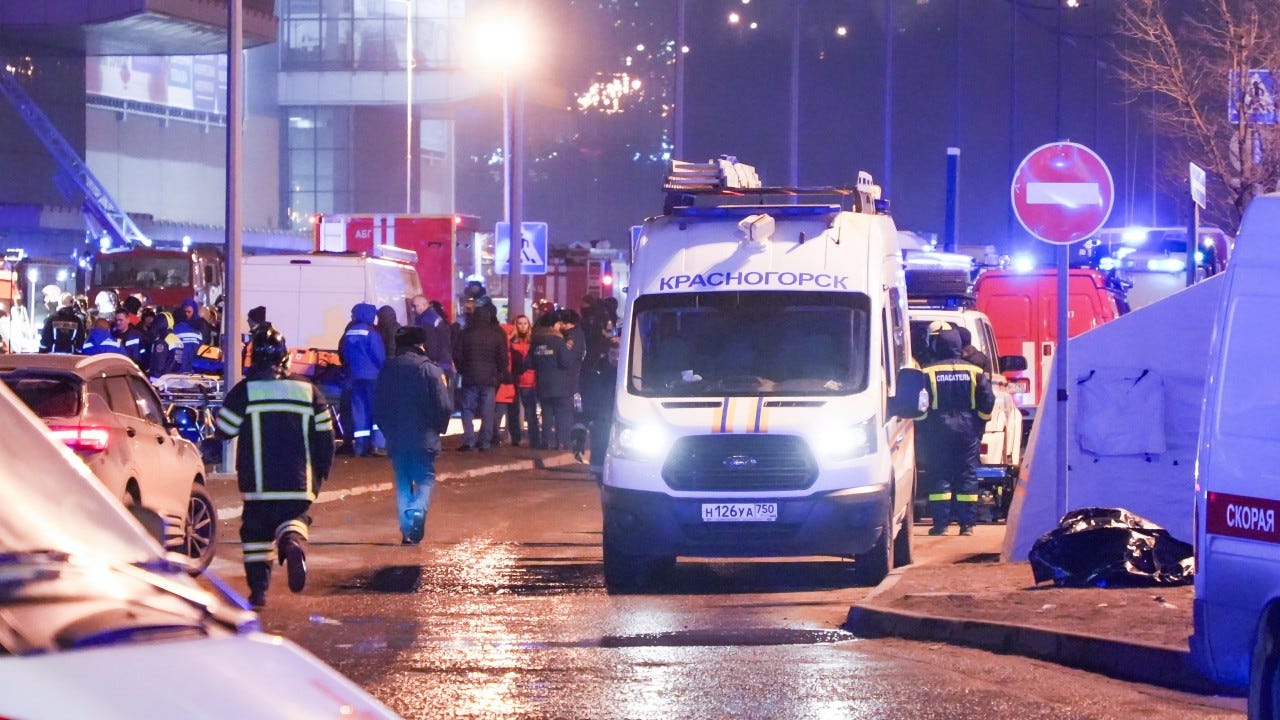On Wednesday, the Francis Scott Key Bridge in Baltimore was hit by a cargo ship and collapsed. The tragedy closed the port of Baltimore indefinitely and brought out the usual suspects to explain why, through six degrees of separation, the bridge tragedy was linked to their favorite talking points.
The facts of the story as we currently know them are that container ship Dali was leaving port at about 1:24 am on the morning of March 27. The ship had a “complete blackout” that caused it to lose both electrical power and propulsion. The cause of the power loss is currently not known, but backup generators restored electrical power quickly while engine power was not restored. The ship reportedly had “routine engine maintenance” while in Baltimore.
When a large vehicle like a ship loses engine power, it still has inertia. A car that loses engine power will coast to a stop fairly quickly but a container ship weighing 100,000 tons takes a lot longer to stop due to its large mass and the minimal friction of the water on the hull. As you may remember from physics, force equals mass times acceleration, which means that the ship would hit a lot of force, even at its slow speed of 8 knots (about 9 mph or 15 kph). Losing power in the confined waters of Baltimore Harbor was a worst-case scenario.
Steering would have been interrupted when the ship lost power. The Dali, which was not using tug boats but did have a harbor pilot on board, would have become at least temporarily uncontrollable when it lost power. The track of the ship shows a slight altering of course before the ship hit a bridge abutment supporting a span of the bridge, but this is likely due to currents and the possibility that the rudder may not have been straight when it lost power.
The ship made a Mayday call when it lost power in the narrow channel. This enabled police to stop most traffic, but there were less than two minutes in which to react. The only fatalities seem to be six workers who were repairing potholes and could not be warned in time. As I write this, two bodies have been recovered and the remaining four are presumed dead. Two other men working on the bridge were rescued shortly after the collision.
Almost immediately, the conspiracy grist mill geared up. One of the first conspiracies I heard was that the Dali had a Ukrainian captain. It was implied rather than stated that the captain might have steered the ship into the bridge for some unknown reason.
Multiple outlets quickly debunked this claim. In reality, the captain and the entire crew at the time of the accident were Indian. (The ship itself is Sri Lankan and flagged in Singapore.) Per the AP, a Ukrainian man was listed as captain of the Dali for five months in 2016 on a jobs website.
Logically, it wouldn’t make sense for a Ukrainian captain to ram his ship into a bridge anyway. Ukrainians would probably want to improve relations with the US, not cause an economic catastrophe. Further, an American harbor pilot was on board and would have been controlling the ship at the time.
Another Dali conspiracy theory involves the Netflix movie, “Leave the World Behind,” which was produced in 2023 by Barack and Michelle Obama. In the movie, a ship loses control and crashes into land. Some internet users have questioned whether this was an example of “predictive programming,” as Fox News noted.
I had never heard of this movie, but you can watch the scene on YouTube. The problem with the movie comparisons is that the ship in the movie is an oil tanker, not a container ship and it runs aground on a beach due to a cyber attack rather than hitting a bridge. Other than being completely different, it’s eerily similar.
It isn’t unheard of to find parallels in fiction for real events. I can name two books that I read before September 11 that talked about using airliners as terrorist weapons (Tom Clancy’s Debt of Honor and Dale Brown’s Storming Heaven, both from 1994). An 1898 novel was more predictive of the Titanic sinking than the movie was of the Dali disaster.
And speaking of cyber attacks, a number of attention seekers have claimed that the accident was due to a cyber attack or some other sort of sabotage. The investigation is ongoing, but so far there is no evidence of any foul play.
That statement includes claims that there was an explosion on the ship before it hit the bridge. Video from a different angle shows that the smoke came from the ship’s smokestack rather than an explosion. It was probably a result of trying to restart the engines.
Left unexplained in the conspiracy theories is why nefarious bridge attackers would make a movie about their plot. And why make a Mayday call or hit the bridge at 1 am rather than rush hour if you want to inflict maximum damage?
Ships crashing into bridges is not unheard of. In fact, a ship crashed into the same Baltimore bridge in 1980. That ship was smaller and did not do as much damage, but there is a long list of ship-bridge collisions in the US alone. The Dali was involved in a previous accident in Antwerp in 2016 when it hit a stone pier. That accident was ruled to be the fault of the pilot.
A more out-there conspiracy theory is that the accident was caused by DEI. It isn’t clear how diversity, equity, and inclusion can be blamed for the accident [insert your six-degrees-of-separation explanation here] when the crew of the ship was Indian and unaffected by American DEI programs. The only conceivable link to DEI would be if the American harbor pilot was an unqualified diversity hire, but there is no evidence of this.
The DEI attacks seem to be an attempt to link Baltimore’s mayor to the accident, but he had nothing to do with the crash. I haven’t seen anyone blame Joe Biden or Hillary Clinton yet, but I’m sure it’s only a matter of time.
President Biden did say that the federal government should fund replacing the bridge. This is both reasonable and constitutional since the bridge was part of the interstate highway system and interstate commerce is the domain of the federal government.
Finally, some are making much of the fact that the six people apparently killed in the accident were immigrants, although I haven’t heard anyone blame the victims. It is true that the bridge victims were all immigrants from Latin America. At least one, Maynor Yassir Suazo Sandoval of Honduras, came to the US 17 years ago.
The fact that these men were all immigrants underscores the fact that immigrants, legal or illegal, often do jobs that Americans won’t do. Filling potholes at 1 am on a cold morning is a good example. This underscores the fact that we need reform to fix our broken immigration system.
One thing that isn’t a conspiracy is the economic impact of the bridge collapse. A few years ago, I took a picture of Baltimore as I flew over. You can see from the photo that the bridge is the only route across the harbor and that the collapse would completely block the channel. It may take years to replace the bridge, creating hellish commutes for many Marylanders.
The port of Baltimore will be closed until a channel can be cleared for shipping. That won’t be a quick or easy task, but it might be quicker than you think. Stephen Flynn, a professor of political science and civil and environmental engineering at Northeastern University, told USA Today that enough debris might be cleared to begin incrementally opening the channel to ships within a few weeks.
Baltimore ranks first for imports of cars and trucks per CNN but is also a major hub for coal and sugar. The good news is that experts say that damage to the US economy is likely to be minimal since there are many other ports to which ship traffic can be shifted. Baltimore, cut off from its shipping income, will bear the brunt of the economic impact.
The Dali destruction of the Francis Scott Key Bridge is almost certainly a tragic accident. We won’t know the exact cause for a while, but we can be thankful that it wasn’t worse with a higher loss of life and a greater economic impact.

